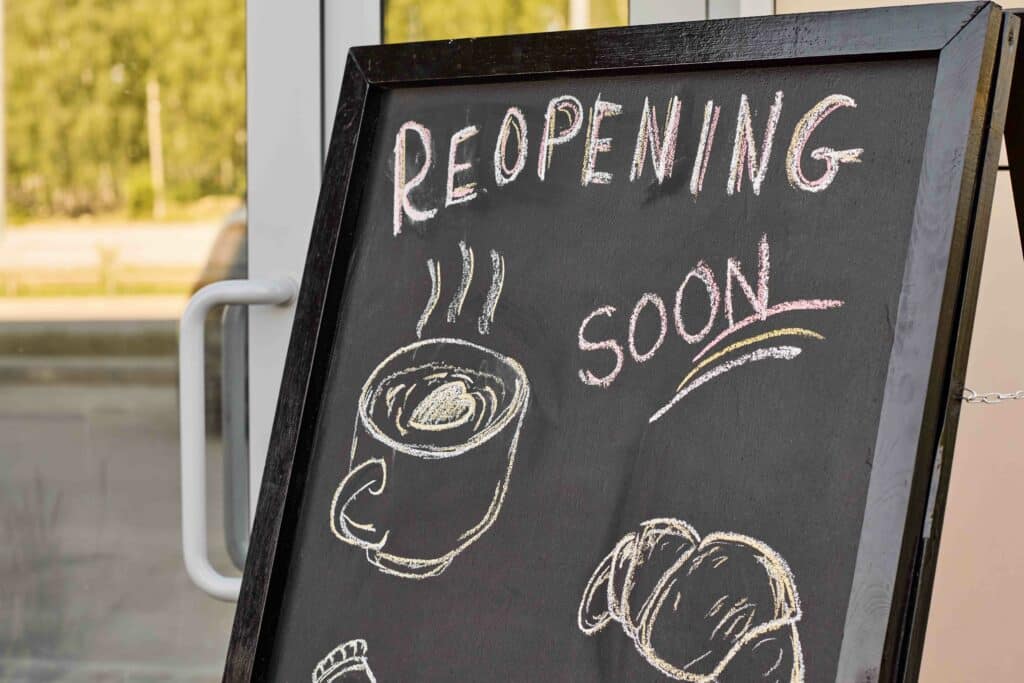
Many states in our nation are starting to think about re-opening their economies, which means every business now faces the question: is our store or office space clean enough to safely welcome back customers and staff? This question will be on everybody’s mind and it will take an added measure of planning and cost to ensure your place of business is as safe and clean as can be. As for the virus, it may pass completely, or it may linger. But one thing is for sure. Many Americans are beginning to react back at the virus, demanding their lives return to normal no matter if the virus is beaten, or if we need to co-exist. As of now, co-existing while maintaining safe practices to protect not only ourselves, but our families and communities seems to be winning the debate.
As you start to think about re-opening your business, hiring a commercial cleaning company or re-thinking your current cleaning contracts will be at the top of your list. It is important to start this process at least one month before re-opening your business or office space. You will need this time to create a new plan that includes varying levels of cleaning, frequency of cleaning, and to fully understand how that cleaning regimen affects your customers and employees. Furthermore, you will want time to advertise to your customers and staff the lengths you have gone through to provide a clean, safe area. Remember that you are facing two challenges: instituting and maintaining new standards of cleanliness and making sure your customers and staff feel safe and satisfied with the new cleaning regimen. Their perception of clean will be just as important as the cleaning itself. Here is some advice on preparing your business to re-open once the new normal takes shape across America, along with a list of questions to ask when you meet with a commercial cleaning company.
First, there are cleaning and disinfection recommendations by the CDC that are important to review. These procedures and chemicals can help when cleaning surfaces areas and commonly touched places including dining tables, chairs, doorknobs, handles, light switches, bar tops, toilets, faucets, sinks, and many more places.
Second, understanding surface dwell times is extremely important. This is the amount of time solvents need to stay on the surface to properly kill germs, viruses, and bacteria. Spraying and immediately wiping is NOT an acceptable cleaning practice and does very little, if anything, to protect against the spread of diseases.
Lastly, know and understand the difference between “cleaning,” “sanitizing,” and “disinfecting” and what is the proper process to kill bacteria, germs, and potential virus strains. Let’s take a moment to look at the differences:
Cleaning removes dirt, impurities, and many germs from surfaces or objects. Cleaning works by using soap (or detergent) and water to physically remove germs from surfaces. This process does not necessarily kill germs, but by reducing or removing them, it lowers their numbers and the risk of spreading infection.
Sanitizing lowers the number of germs on surfaces or objects to a safe level, as judged by public health standards or requirements (though this may change in the coming months/years). This process works by either cleaning or disinfecting surfaces or objects to lower the risk of spreading infection.
Disinfecting kills germs on surfaces or objects. Disinfecting works by using chemicals to kill germs on surfaces or objects. This process does not necessarily clean dirt from surfaces, but by killing germs on a surface after cleaning, it can further lower the risk of spreading infection. Keep in mind, proper cleaning must be performed before attempting to disinfect.
The following is a list of topics you will want to highlight when speaking with your commercial cleaning company (or when looking to hire one) and building out a new cleaning plan:
Finally, we want everybody to be safe once America starts to re-open businesses. We want to return to our favorite restaurants and stores and are rooting for all businesses to re-open successfully. Remember, take the necessary steps to protect yourself, your customers and your staff. Come up with a plan and give yourself ample time to initiate that plan before re-opening.